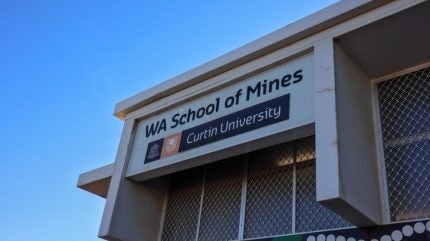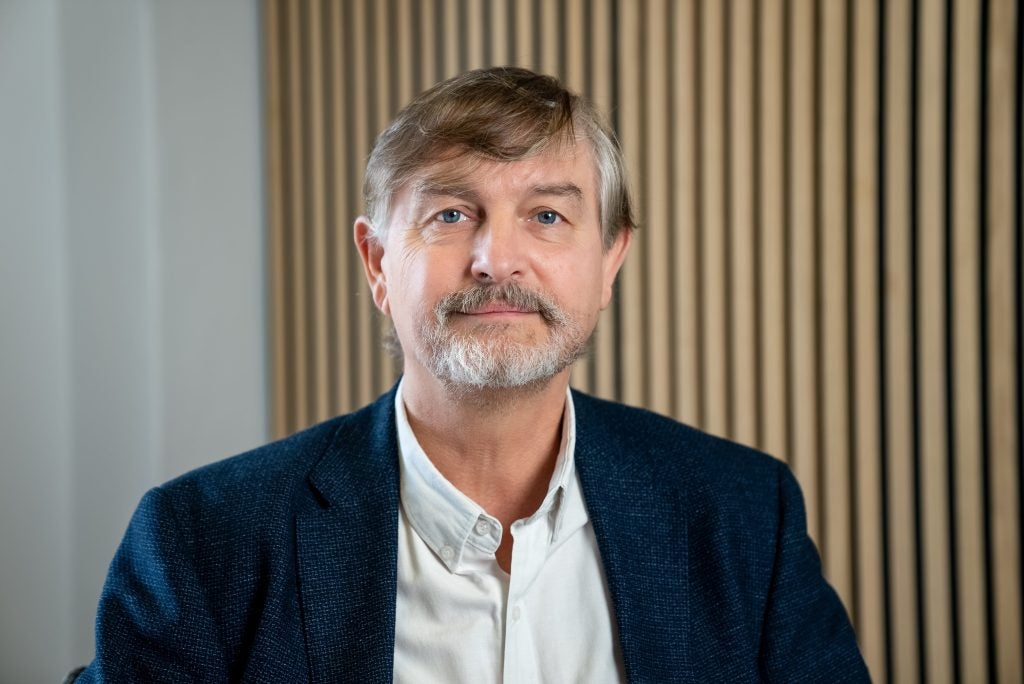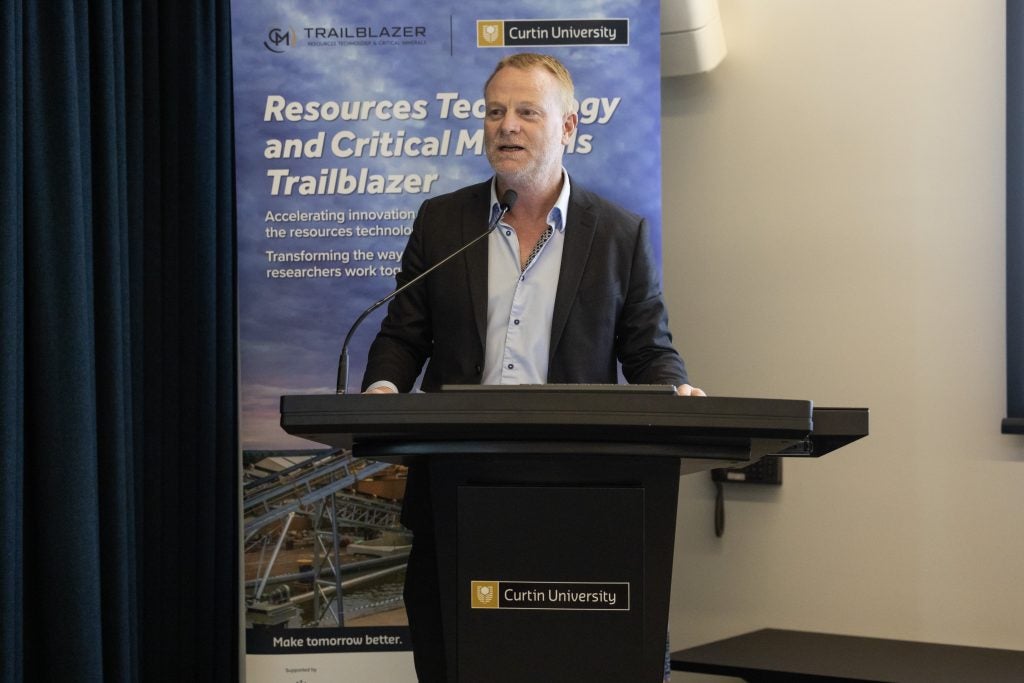
Digitalisation is increasingly becoming a pillar of Australia’s mining industry across upstream and downstream operations.
Mining companies with digital ambitions are exploring a broad spectrum of innovations for continuous improvement, from AI to 3D modelling technology.
In lieu of relying solely on in-house research and development (R&D), which can be insular and pose difficulties in terms of cost and scalability, university-led research offers access to expertise, specialised facilities and market opportunities.
Collaboration benefits not only participating companies but the broader industry through long-term knowledge-sharing, with the Minerals Council of Australia identifying both miners and universities as “driving the unprecedented rate of technological change across the industry”.
Australia’s mining sector is supported by world-class academic institutions conducting cutting-edge research on digitalisation, as the nation works to streamline production and maintain its position as a major player in the global critical minerals race.
Australia’s progress in mine digitalisation
University of Queensland professor Mohsen Yahyaei tells Mining Technology that: “Australia is at the forefront of mining digitalisation, setting global benchmarks in automation, AI and data-driven decision making.”
Indeed, Australian mining megacorps have pioneered digitally connected operations. Since 2019, industry leader Rio Tinto has been optimising its digitally automated rail network, AutoHaul, to transport iron ore from its mines in Western Australia’s Pilbara region. This is the world’s first and largest heavy-haul long distance autonomous train service.
A report by Mining Technology’s parent company, GlobalData, titled Development of Autonomous Trucks in the Global Mining Sector finds that Australia had the largest fleet of 927, far ahead of competitors China with 562 and Canada with 289, as of July 2024.
Automated software processes and AI programming can also analyse geological and exploration data, performance data from machinery, and data on safety and production processes. Rio Tinto’s CIO, Dan Evans, previously told Mining Technology that this is “vital for gaining competitive advantage”.
Digital twins are another burgeoning tool being used to meet the global raw materials challenge. Using data collected from physical assets and 3D models, a digital render can be used for process simulations to improve productivity and safety at mining sites. For several years, Australia’s biggest gold miner, Newcrest, has been working on digitally replicating its flagship Cadia mine in New South Wales.
Australia’s BHP, the largest mining company in the world by market capitalisation, spent A$30.8m ($19.3m) in fiscal year 2024 on digital technologies including AI, the Internet of Things and automation, according to GlobalData. In its annual report, the company described digital technology as a “key lever”.
BHP’s strategy demonstrates the level of investment required for comprehensive digitalisation. The Australian Government’s Commonwealth Scientific and Industrial Research Organisation (CSIRO) confirms that: “Mining and resource giants understand the value of R&D. While [they] can afford significant investment, smaller companies may find accessing quality R&D services difficult.”
The Australian Industry Group tracked a 78% decrease in R&D investment from mining businesses from 2012 to 2022, pointing out that this has broader ramifications for Australia’s “knowledge economy” as the nation “relies heavy on a small number of R&D ‘champion’ industries”, one of which is mining.
As well as investment capacity, the adoption of digital technologies in mining depends on the availability of existing infrastructure and trained staff, presenting additional challenges for smaller operators.
University-industry collaboration is combatting such imbalances and declines in Australian mining R&D towards an inclusive industry-wide digital transformation.
Yahyaei confirms the mutual benefits of this relationship as: “Academic institutions bring advanced research, modelling techniques and fresh perspectives. In turn, the mining industry provides real-world challenges, operational data and scalability potential.”
Connecting industry and universities for R&D
The World Intellectual Property Organisation’s Global Innovation Index, which assesses the innovation ecosystem in 132 countries, ranked Australia 23rd in the world in 2024, highlighting the quality of its universities.
The national mining industry has capitalised on this academic expertise, establishing an intricate R&D network of 65 programmes with Australian universities that have aided the development of digital tools.
A key initiative is the Trailblazer Universities Programme. The federal government has allocated A$370.3m towards new research capabilities, commercialisation outcomes and partnerships.
The University of Queensland is a key institutional player, hosting the Julius Kruttschnitt Mineral Research Centre (JKMRC) and the Sustainable Mining Institute, which was established in 2001 by the state government and more than 20 mining companies. As JKMRC director, Yahyaei works closely with industry through the Future Autonomous Systems and Technologies (FAST) programme.
He highlights the JKMRC’s Mill Filling Inference Tool, a soft sensor designed for semi-autogenous grinding mills. Mid-tier mining company MMG Australia was involved in funding the solution, which enables miners to run mills at higher capacity without risking overload, reduces the need for manual measurements and predicts liner wear and slurry pooling to prevent unplanned shutdowns.
Other digital mining solutions developed under the FAST programme include a 3D model for stockpiles and a suite of process control performance benchmarking tools to enhance automation in mineral processing.
“These are real-world outcomes of academia-industry collaboration, turning theoretical concepts into soft sensors and models that solve problems for mineral processing operations,” states Yahyaei.
Developing commercial solutions using digital tools
Curtin University is another Trailblazer member and a heavyweight in digital mining R&D. It boasts many major mining partnerships including the BHP Curtin Alliance, which has established several cooperative research centres (CRCs).
The developments produced by these CRCs cover data science tools for site maintenance, battery minerals technology, an integrated extraction simulator and a coiled tubing drill rig called RoXplorer.
RoXplorer is a prime example of the broad reach of Australia’s collaborative ecosystem. Through the MinEx CRC, the development involved industry participants of Anglo American, BHP, Epiroc, South32 and Wassara, alongside Curtin, the CSIRO, South Australia University and the Minerals Research Institute of Australia. The drilling rig was then advanced with virtual reality and digital twin technology for on-site simulation.
“We find collaboration with universities is fantastic for early stage development,” says Ivor Bryan, chief technology officer (CTO) of Draslovka Mining Process Solutions, which currently has a A$3m research partnership with Curtin University under the Trailblazer programme.
“The experience has been very focused on scientific quality, and we have overlaid that with some directional guidance on coming up with commercial solutions. We have now got technology that we are taking to market globally.”

The university-industry ecosystem in Australia has also birthed mining start-ups to channel promising R&D solutions direct to market. A notable example is ElectraLith, a spinout from Monash University that is backed by Rio Tinto. The company’s CTO, Shaun Oosthuizen, tells Mining Technology that: “The combination of venture capital and academic and industry support we received as a start-up significantly boosted our ability to innovate and grow.
“Blending academic innovation with mining companies’ real-world needs and applications enhances the chances of successfully commercialising industry-changing technologies and achieving sustainable growth in a highly competitive mining sector.”
Commercialisation and education challenges
Once a digital solution has been developed, there remains the challenge of commercialisation and successful adoption by both mining companies and the workforce.
Australia’s miners have been historically slow in this process even as digitalisation has ramped up. According to the journal Mineral Economics: “In Australia there is a huge lag, on average 13 years, between the release of a technology and its adoption within coal operations.” This is cause for alarm as coal is one of Australia’s two biggest mining commodities.
Speaking to Mining Technology, Curtin IP commercialisation director Rohan McDougall explains that the university has “set up a range of companies to service digitalisation in the mining sector based on research outcomes and outputs”.
He cites Scanalyse, a successful business established by Curtin that offers laser scanning and mapping technology with the ability to collect ten million spatial data points in less than five minutes to monitor site equipment. Australian mining clients include BHP, Barrick and Rio Tinto.

In 2024, the A$18.6m Curtin Venture Studio was launched to provide researchers with access to capital, potential partners, mentors, infrastructure and equipment with the aim of fast-tracking innovation.
As the range of digital mining solutions expands, Bryan identifies upskilling as a key challenge. “The traditional miner needs a different set of skills than they would have had ten or 15 years ago.”
This is another area in which industry can benefit from connecting with universities as they deliver on their primary purpose: to educate.
Queensland University’s FAST programme offers training for engineers and operators in process automation. Curtin University also provides a course for industry professionals on applications of digital technology across the mining value chain.
As well as facilitating professional development, university mining departments across Australia are training the next generation of industry workers in digital evolution. A notable example is the University of Adelaide’s Mine Automation module, which covers data analytics, sensors and remote control, simulation and digital twins. Future-proofing the workforce is crucial as Australia is one of several global mining hubs that is facing a pressing digital skills gap.
“Certainly, training people and providing access to the latest coding systems and software tools that are being developed will continue be done at universities,” asserts McDougall.
Collaborating on a digital future for mining
Australia’s mining industry is ideally positioned to continue benefitting from its close relationship with academic R&D networks and forge ahead on widespread digitalisation.
“Things are moving quickly,” says McDougall. “I am very positive about the interest of the mining sector in digital investment going forwards, because it has great potential to improve productivity and safety and enable remote operations.”
Bryan concurs. “As a capital-intensive industry, mining has historically been quite conservative, but in the past ten years there has been much more openness to innovation and collaboration.” He highlights R&D in sensing technology and real-time analysis as crucial themes in future digital progress.
The possibilities of the university-industry relationship appear endless. In fact, Australia’s neighbour, Indonesia, another global mining giant, recently proposed a revision to its mining law to grant concessions for special licence areas to national universities. This signals the expansive and invaluable role academic institutions have in pushing the industry forward.
“Many challenges in mining are too complex for a single company to solve alone,” confirms Yahyaei. “As an independent and impartial group, universities enable cross-industry knowledge sharing and collaboration.
“This enables the development of open standards for digital integration, ensuring compatibility between different mining technologies so solutions developed in one company or mine site can benefit the broader sector.”



